Home Solar Battery Storage
Solar Battery Storage: How They Work, Benefits & How To Buy
As the world shifts its focus to greener energy solutions, solar battery storage has really made a mark. These advanced tech units are crucial for enhancing and maximizing the efficiency of your solar energy system. By having solar battery storage, you can store the excess power generated by your solar panels, thus reducing your reliance on the main electricity network.
In this guide, we will explain how solar batteries work, explore the benefits they offer, and guide you through the process of making an informed purchase. Let’s dive in!
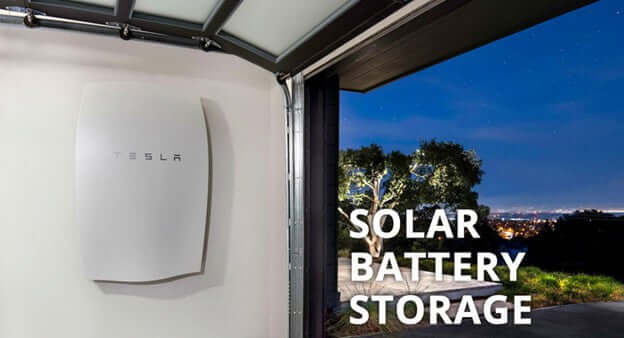
Table of Contents
ToggleHow do solar battery storage work?
Solar batteries work by storing the excess solar energy your solar system generates that would otherwise be sent back to the electricity grid. This energy can be used to power your home at night when the panels are not generating energy or on overcast days when solar power production is low.
Here is a step-by-step process for how AC-coupled systems work:
During daylight hours
- Solar panels absorb sunlight, which is converted into direct current (DC) electricity by solar cells.
- The DC electricity passes through the existing solar inverter to be converted into alternating current (AC) electricity used to run appliances.
- The switchboard directs the electricity to your electrical appliances.
- Excess energy is then directed to a battery inverter and changed back to DC electricity to be stored for later use.
When the sun goes down or during overcast days
Typically, solar panels do not generate any electricity at night. Also, on cloudy or rainy days, solar power production is greatly reduced as there are fewer light particles that can be converted to create enough electricity. Therefore, the household will switch to stored energy.
Here is what happens:
- The solar battery sends the stored DC electricity through to the battery inverter.
- The battery inverter then converts the DC electricity to AC electricity that can be used in the home.
- The switchboard then directs the stored electricity to run your electrical appliances.
- If the solar battery’s charge runs out, you will have to draw electricity from the grid to keep running your appliances.
If you do not have a solar battery system, your solar system’s excess energy will be sent to the power grid, and you will receive solar feed-in tariffs as a credit on your electric bill.
4 Benefits of solar batteries
Whether you are installing a new solar system or adding solar batteries to an existing solar power system, here are 4 benefits you can get from your solar battery system:
1. Energy independence
Solar battery systems enable homeowners to store excess electricity generated by their solar system during the day. This stored energy can be used at night and during periods of low sunlight or power outages, thus reducing your dependency on the grid power.
2. Saving on electric bill
By using stored energy, homeowners can offset their electricity costs during peak demand periods or when sunlight is scarce and purchase from the grid only when the need arises. This will result in significant long-term cost savings on electric bills.
Here is a practical example: A residential solar power system without a solar battery covers about 30–50% of a household’s power consumption. When a solar battery is added, it can cover up to 80–90%, or even 100%, of a household’s power consumption.
3. Reduce carbon footprint
Although there is tremendous progress in renewable energy adoption in Australia, over 70% of the energy generated on the grid is still from fossil fuel sources.
By storing solar energy in solar batteries and efficiently using it, homeowners reduce their reliance on traditional fossil fuels, thereby lowering their carbon footprint and contributing to a greener, more sustainable planet.
4. Reduce reliance on feed-in tariffs
Solar feed-in tariffs have been a favourable way of earning credits on electricity costs for a long time. However, FiTs continue to decrease over time and are no longer a reliable way of saving on energy costs.
Solar batteries allow you to store the excess energy for later use instead of sending it to the grid. This maximises self-consumption, which is the most effective way of reducing your electricity costs and increasing your savings, thus reducing your reliance on FiTs.
How much do solar batteries cost?
The average cost of solar batteries in Australia ranges from $800 to $2,000 per kWh of capacity installed. The exact cost may vary widely depending on the size, type, and brand of the battery, as well as your location.
Here is a table showing the current costs of solar batteries by size, excluding all state-based solar battery rebates.
Average cost of solar battery system (fully installed)
| Battery size | Average cost (battery only) | Average cost (battery + inverter/charger) |
|---|---|---|
| 3kWh | $4,260 | $4,770 |
| 6kWh | $8,240 | $9,180 |
| 8kWh | $10,080 | $11,120 |
| 10kWh | $13,320 | $14,550 |
| 13kWh | $16,380 | $17,680 |
| 15kWh | $18,970 | $20,300 |
| 18kWh | $23,940 | $25,920 |
Notes:
- The costs Include costs for installation, wiring and other essential components
- The costs do not include any state-based rebates
How much can I save with a solar battery?
On average, a solar battery can save you between $500 to $1500 a year on your electricity bill, depending on its size, your electricity rate, and your daily power consumption. For instance, a good-quality 10kWh solar battery can save you between $700 and $1,000 a year on your power costs.
Here is how to calculate your savings:
Your average annual power bill savings with a home solar battery will depend on factors such as:
- The battery’s size
- Your battery’s daily charge and discharge and
- The difference between your grid rate and the solar feed-in tariff rate
Assuming your daily electricity consumption is about 30kWh of electricity per day on average and you have a 6.6kW solar system already installed, you would need a battery with a capacity of between 14 and 18 kWh. A good example is the 13.5 kWh Tesla Powerwall 2, which costs about $14,000.
Also, let’s assume you pay $30 c/kWh for your electricity, and your retailer offers a feed-in tariff of $5 c/kWh.
To know how much you can save, follow these steps:
Step 1: Take your battery’s size, which is 13.5kWh in this case.
Step 2: Multiply your battery’s size by the daily average charges/discharges
For example: 13.5kWh x 1 charge/discharge per day = 13.5
Step 3: Multiply the answer above by the difference between your grid usage rate and solar feed-in tariff rate
For example: 13.5 x 25c/kWh (30c/kWh – 5c/kWh) = $3.38 average daily savings
Step 4: Total annual savings will be $3.38 x 365 = $1,233.7
Note: These savings are for a solar battery alone. The financial returns of solar panels plus battery storage will be higher. For example, a 6.6kW solar system can save you between $960 to $2,000 annually and you can earn FiT credits of between $100 to $200 depending on how much electricity you export to the grid.
What is the payback period of solar batteries?
The average payback period for residential solar batteries is between 8 and 15 years. However, the time may vary depending on the size and type of your battery as well as your daily power consumption.
Are there rebates for solar batteries?
There are no direct solar battery rebates from the federal government in Australia. However, the government’s Renewable Energy Scheme provides incentives to small businesses and homeowners to reduce greenhouse emissions and encourage the uptake of solar power systems.
There are two schemes under the Renewable Energy Scheme (RET).
- Large-scale Renewable Energy Target (LRET) for large-scale solar power investments
- Small-scale Renewable Energy Scheme (SRES) that supports the installation of small-scale solar power systems by providing Small-scale Technology Certificates (STCs) to eligible homeowners and small businesses
State rebates for solar battery systems
Some states offer incentives and interest-free loans to encourage the uptake of solar batteries. These include:
- Victoria: The Victorian government offers interest-free loans of up to $8,800 to eligible households to reduce the upfront costs of installing solar battery systems.
The loans are provided through the Solar Homes Program, and the repayments should be completed within 4 years. There are currently 4,500 interest-free loans available in 2023–24. - Northern Territory: NT residents can apply for a grant of $450 per kWh of their battery system capacity up to a maximum grant of $6,000 to purchase and install solar batteries and inverters. This grant is available through the Home and Business Battery Scheme.
- Australian Capital Territory: The Next Gen Energy Storage Program in the ACT is no longer accepting applications for rebates since it has reached its goal of having 5,000 batteries installed in Canberra homes and businesses.
However, eligible households can access zero-interest loans from $2,000 to $15,000 for solar panels, battery systems, and other energy-efficient products through the Sustainable Household Scheme. The loan is repayable over 10 years, and there are no upfront costs or fees. - Southern Australia: SA’s Home Battery Scheme (HBS) subsidies have all been allocated, and no new applications are being accepted. However, all HBS subsidies that have already been approved can continue to be progressed.
Do feed-in tariffs still apply if you have a solar battery?
Once you install a solar battery, the excess energy your solar panels generate will be directed to charging the battery instead of being sent to the power grid for a feed-in tariff. Therefore, for every kilowatt hour of energy diverted into charging your battery storage system, you will forego the feed-in tariff.
Households without a battery system send their excess energy to the grid and earn a credit on their electric bills.
Although FiT rates are diminishing across Australia, with current rates ranging from 5 to 15 cents per kilowatt-hour (kWh), it is still worth considering the opportunity, especially if you do not have a solar battery installed. Also, the rates differ from state to state, with some offering higher rates than others.
How to buy a solar battery
When looking to buy a solar battery, there are several things you need to consider. These include:
- Capacity: The battery’s capacity will depend on the size of your solar system and your daily power consumption. It is important to choose a battery with enough capacity to meet your daily energy needs.
- Type and brand: The type and brand of the battery are also essential when choosing a battery system for your home. Depending on your energy needs and preferences, you can choose lithium-ion, lead-acid, or saltwater batteries from your preferred brand.
- Cost: Different batteries come with different price tags. For instance, lead-acid batteries tend to be cheaper but less efficient, while lithium-ion batteries are expensive but highly efficient and durable. Choose a battery that is within your budget, as long as it meets your needs and preferences.
- Warranty and lifespan: Ensure you choose a battery from a reputable brand that offers an extended warranty to ensure durability. Most batteries come with warranties ranging from 5 to 15 years. This will give you peace of mind, knowing you are protected against defects and performance issues with the battery system.
- Charge and discharge cycles: Determine the number of times your battery can be charged and discharged before it starts losing its capacity. Most batteries have a lifespan of between 4,000 and 6,000 cycles.
- Depth of Discharge (DoD): You should also determine how much stored energy can be used before your battery needs recharging. Batteries with deeper DoD levels tend to have shorter lifespans as they offer more usable energy.
4 Popular Solar batteries reviewed
Whether you are looking to buy a solar battery backup for your home or want to learn more about the best options on the market, here is a review of 4 popular solar batteries.
1. Tesla Powerwall 2
The Tesla Powerwall 2 stands as a frontrunner in the solar battery market. With a sleek design and a large storage capacity of 13.5 kWh, it’s suitable for both residential and commercial applications. The Powerwall 2 boasts a high round-trip efficiency of 90% and can be easily integrated with an existing solar system.
Price estimate: $13,000 to $15,000 for a single unit (not inclusive of installation costs). Costs can vary depending on your location and how many units you want to install.
Specs and features
- Battery type: Lithium-ion – lithium nickel manganese cobalt oxide (NMC)
- Capacity: 13.5kWh
- Depth of Discharge (DOD): 100%
- Temperature tolerance: – 4° to 122° Fahrenheit
- Cycle life: 3,200 cycles
- Warranty: 10 years
The Tesla Powerwall 2 is an excellent option if you are looking for quality, reliable, and durable solar batteries.
2. Sungrow SBR HV
Sungrow SBR HV is a game-changer in the solar industry. The SBR HV is a stackable solar battery system that offers a capacity of 3.2kWh in each module. The minimum capacity for this battery starts at 9.6kWh (3 modules), which can be expanded up to 25.6kWh (8 modules).
Price estimate: $11,500 to $16,000 (not inclusive of installation costs).
Specs and features
- Battery type: Lithium-ion – lithium iron phosphate (LiFePO) technology
- Capacity: 9.6 kWh, 12.8kWh, 16kWh, 19.2kWh, 22.4kWh, 25.6kWh (expandable modular design)
- Depth of Discharge (DOD): 90%
- Compatibility: compatible with a wide array of solar inverters, thus offering versatility.
- Warranty: 10 years
With their high performance, modular design, smart features, and extended warranties, Sungrow batteries are a worthwhile investment for people looking for quality and reliable battery solutions.
3. Redback SB
The Redback Smart battery, proudly Australian-made, is a state-of-the-art solar energy solution specifically engineered and designed for the Australian market. Renowned for its efficiency, the Redback SB Solar Battery seamlessly integrates renewable power sources with intelligent energy management.
With a commitment to sustainability, Redback technologies empower households and businesses to harness the power of the sun while supporting the local economy.
Price estimate: $9,000 to $15,000 (not inclusive of installation costs).
Specs and features
- Battery type: Lithium-ion
- Capacity: 7.2kWh, 9.6kWh and 14.2kWh (expandable modular design)
- Maximum efficiency: 96.60%
- Depth of Discharge (DOD): 90%
- Warranty: 10 years
- Compatibility: Compatible with most modern solar power systems
- Australian-made, ensuring quality and reliability.
- Features a smart monitoring system that enables remote tracking and management.
Redback’s cutting-edge technology embodies reliability, performance, and sustainability, making it a standout choice for those seeking a powerful, intelligent solar energy solution.
4. LG Chem Resu
The LG Chem RESU series has gained recognition for its cutting-edge lithium-ion battery technology. Available in different models with varying capacities, such as RESU 10H (9.8 kWh) and RESU 16H (16 kWh), LG batteries are compact and efficient.
Price estimate: $4,000 to $11,000, GST included. (cost not inclusive of installation).
Specs and features
- Battery type: Lithium-ion battery
- Storage capacity: 6.5 kWh, 9.8 kWh, 13.1 kWh, and 16 kWh
- Usable capacity: 90% (100% for 16kWh)
- Cycle life: 6,000 cycles
- Warranty: 10 years
- Clean Energy Council approved
- Built-in inverter to convert DC to AC electricity
The LG Chem RESU battery is cost-effective and reliable, making it an excellent choice for grid independence.
| Battery | Image | Type | Cost per kWh | Battery inverter combo? | Storage size | Modular? | Weight | Max efficiency | Max power | Warranty | Specs Sheet | Nominal Capacity | Voltage Range | Housing Protection | Communication | Technlogy Class |
| Company | Alpha Ess | Ampetus Energy | LG | Soltaro 2 | Aquion Energy | Sungrow-Samsung sbp4k8 | Tesla Powerwall 2 | ZEN Energy | sonnenBatterie Eco | Fronius Solar Battery | Redflow Zcell | Leclanche Apollion Cube | Simpliphi Batteries | Solax | Magellan Power | Enphase Energy | AKASOL’s neeoQube | Sunverge SIS | Redback Technologies | Hansol Technics | Sungrows |
| Battery | Smile5-INV | Ampetus Super Lithium | RESU 3.3 | Soltaro 2 | Aspen 48M | SBP4K8 | Power Wall 2 | ZEN HYBRID STORAGE SYSTEM | Batterie ECO 8.14 | SYMO HYBRID 3.0-3-S | Zcell | Apollion Cube 15s | OES3 | Triple Power T-BAT H 5.8 | HESS | Encharge 3 | neeoQube | SIS - 6848 | BE14000 | A10 10.8 | SBP4K8 |
| Image |

|

|
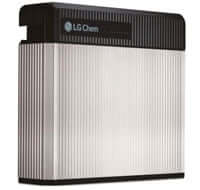
|
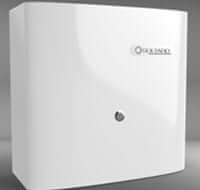
|

|
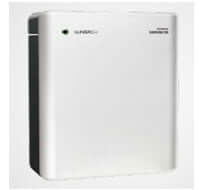
|
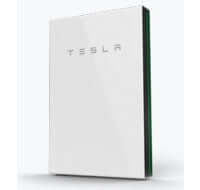
|
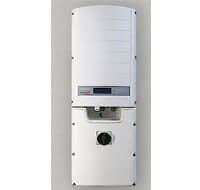
|

|
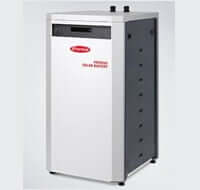
|
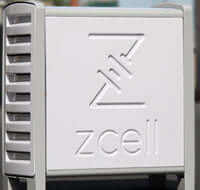
|
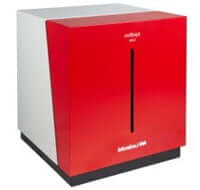
|
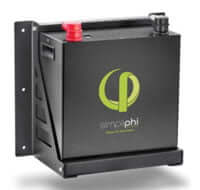
|
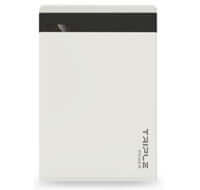
|
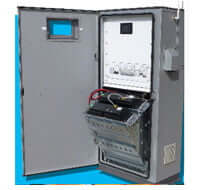
|

|

|
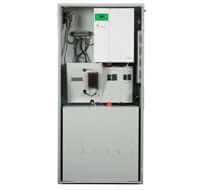
|
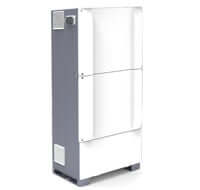
|

|

|
| Type | Lithium-ion | Lithium-iron-phosphate | Lithium-ion | Lithium | Saltwater | Lithium ion | Lithium ion | LG Chem RESU10H | lithium iron phosphate | Lithium ion | Zinc-bromine | lithium iron | Lithium Ferrous Phosphate | Lithium Ferrous Phosphate | Advanced Lithium Ion (NMC) | Lithium iron phosphate | Lithium ion | Lithium ion | Lithium ion | Lithium ion | Lithium ion |
| Cost per kWh | $668 | $756 | $837 | $850 | $880 | $962 | $1,000 | $1,000 | $1,071 | $1,111 | $1,260 | $1,380 | $1,398 | $1,540 | $1,610 | $1,714 | $2,143 | $2,229 | $2,241 | $2,700 | $730 |
| Battery inverter combo? | Yes | Yes | Yes | Yes | Yes | Yes | Yes | Yes | Yes | Yes | Yes | Yes | Yes | Yes | Yes | Yes | Yes | Yes | Yes | Yes | Yes |
| Storage size | 13.6kW | 3kW | 3.kW | 2 kW | 25.9kW | 4.8 kW | 14 kW | 10kW | 14kW | 5kW | 10kW | 18kW | 3.4 kW | 4 kW | 6.5kW | 3.36 kW | 5.5 kW | 11.6 kW | 4.8 kW | 4.98 kW | 4.8 kW |
| Modular? | Yes | Yes | Yes | Yes | Yes | Yes | Yes | Yes | Yes | Yes | Yes | Yes | Yes | Yes | Yes | Yes | Yes | Yes | Yes | Yes | Yes |
| Weight | 60 KG | 53 KG | 31 KG | TBD | 1504 KG | 48 KG | 114 KG | 228 KG | 95 KG | 34.8 KG | 72.2 KG | 44 KG | 52 KG | 62KG | TBD | TBD | 239 KG | 48 KG | |||
| Max efficiency | 97.60% | 95% | 95% | 90% | TBD | 95% | 90% | 98% | 90% | 97% | 98% | 90% | 97% | 96% | 98% | 92.50% | 90% | 96% | 95% | ||
| Max power | 13.6kW | 3kW | 3.kW | 2 kW | 25.9kW | 4.8 kW | 14 kW | 10kW | 14kW | 5kW | 10kW | 18kW | 3.4 kW | 4 kW | 6.5kW | 3.36 kW | 5.5 kW | 11.6 kW | 4.8 kW | 4.98 kW | 4.8 kW |
| Warranty | 10 Years | 10 Years | 10 Years | 10 Years | 8 Years | 10 Years | 10 Years | 10 Years | 10 Years | 10 Years | 10 Years | 2 Years | 10 Years | 10 Years | 10 Years | 10 Years | 10 Years | 10 Years | 5 Years | 5 Years | 5 Years |
| Specs Sheet | Yes | Yes | Yes | Yes | Yes | Yes | Yes | Yes | Yes | Yes | Yes | Yes | Yes | Yes | Yes | Yes | Yes | Yes | Yes | Yes | Yes |
| Nominal Capacity | TBD | 60 Ah | 63 Ah | 40 Ah | 48 Ah | 94 Ah | TBD | TBD | TBD | TBD | TBD | TBD | 66 Ah | 115.2 Ah | TBD | TBD | TBD | TBD | TBD | TBD | 94 Ah |
| Voltage Range | 40-60 VDC | 42 - 58 VDC | 42.0 ~ 58.8 VDC | 40V - 58.4V | 40 to 59.5 V | 44.8 V–58.1 V | TBD | TBD | TBD | TBD | 40-58 V | TBD | TBD | 100-131 V | 42 - 58.8 V | 240/211—264 VAC | 37,8 V to 58,8 V | TBD | 125 – 550V | TBD | 44.8 V–58.1 V |
| Housing Protection | IP65 | IP21 | IP55 | IP65 | IP2X | TBD | TBD | TBD | TBD | TBD | TBD | IP 21 | TBD | IP55 | TBD | TBD | IP 50 | TBD | IP65 | TBD | IP55 |
| Communication | Ethernet | RS485/CAN-BUS | CAN 2.0 B | RS485/CAN | TBD | CAN | Worldwide Compatibility | TBD | TBD | TBD | TBD | CAN – SMA ready | TBD | TBD | TBD | Wireless 2.4 GHz | TBD | CAN BUS | TBD | TBD | CAN 2.0 B |
| Technlogy Class | TBD | TBD | TBD | TBD | TBD | TBD | TBD | TBD | TBD | TBD | TBD | TBD | TBD | TBD | TBD | TBD | TBD | TBD | TBD | TBD | TBD |
How virtual power plants work: benefits
A virtual power plant (VPP) is a network of solar and battery systems for homes and businesses that are centrally controlled or coordinated by a VPP company to provide power during peak periods and stabilise the grid.
A VPP helps reduce reliance on the power grid, reduces your power bills, and provides support to the power grid and the community.
In return, you will be paid a subsidy ranging from $0.55/kWh to $6.90/kWh, depending on the VPP company. You can also get incentives, including monthly bill credits, rebates for buying a new solar battery system, or free solar panels and battery installation.
How to join a VPP
Here is how you can join a virtual power plant (VPP):
- Start by researching and selecting a VPP provider that supports solar batteries.
- Research whether the VPP is compatible with your solar system.
- Sign up through their platform, typically online.
- Install any necessary hardware or software for integration.
- Connect your solar battery to the VPP network.
- Enjoy collective energy benefits and incentives, and contribute to a more resilient and sustainable energy grid.
Benefits of a VPP
Here are the financial and environmental benefits of a virtual power plant:
- Lower energy costs: A virtual power plant can help adjust and reduce the energy consumption of a building based on signals related to utility prices and energy demand. This improves energy efficiency and reduces energy waste and power costs during peak periods.
- Reliability and affordability: Virtual power plants are a cost-effective and reliable way of enhancing grid stability and resilience.
- Additional revenue: Homeowners and businesses participating in VPPs are directly compensated through cash payments, bill savings, and reward programs.
- Environmental benefits: VPPs reduce power usage during periods of high demand, reducing reliance on fossil fuels such as coal and natural gas to generate grid electricity. In return, this helps reduce CO2 emissions, thus contributing to a cleaner and greener environment.
How do solar panels work with no sun or at night?
Typically, solar panels absorb sunlight during the day and convert it into electricity that is used at home. At night, there is no sunlight to draw energy from, so the panels do not generate any electricity. Therefore, you will be forced to draw energy from the grid to power your home.
Solar panels can still work on cloudy days, albeit less efficiently, as they will draw energy from indirect sunlight.
If your solar panels produce excess energy during the day, this energy will be automatically sent to the grid unless you store it in solar batteries to use at night.
Solar batteries allow you to use your backup power when you need it, such as during the night or power outages. This reduces reliance on the grid and gives you a degree of grid independence.
Pros and cons of solar batteries
While solar batteries grant you flexibility and energy independence, they are quite costly and may add complexities that may make them difficult to manage. Let’s have a look at some of the pros and cons of solar batteries:
Pros
- Reduce energy bills. They store energy that you can use at night instead of drawing electricity from the grid, thus reducing your overall power bills.
- Reduce grid reliance. You can use your stored energy whenever you need it, like during the night, during power downtime, or overcast days.
- Batteries are low-maintenance; thus, you will not spend a fortune on maintaining them.
- Reduce your carbon footprint. Using solar panels and batteries reduces your reliance on fossil fuels, which are the main cause of increased CO2 emissions.
- You can become part of a VPP program and help provide electricity to your community and stabilise the power grid.
Cons
- Solar batteries are quite expensive to install.
- They are large, which means they will require significant storage space.
- Batteries have a shorter lifespan, which ranges between 5 and 15 years. Thus, you may need to replace them at least once or twice to keep up with your solar panels’ lifespan.
- Solar batteries may add complexity to your solar PV system. This may lead to increased maintenance to ensure your system remains efficient.
Are solar batteries worth it?
Based on the current cost of a solar battery, just investing for the sake of reducing power bills is not really worth it. You can get an 85 – 90% reduction in power bills with solar panels and a feed-in tariff alone. Spending another $10,000 just to save that last 10 – 15% ($50 – $80 per month) is not wise.
Things become a little more attractive with VPP’s as the ROI does look a lot healthier. Distributed energy and Virtual power plants are quite new, and so are the companies offering these services. With a bit more data in 12 months’ time, we can make a more solid evaluation.
Verdict: Wait – Batteries are poised to come down in price significantly in the next 2 – 5 years, so I would advise you to wait unless you have a real need like going off-grid.
When batteries come down in price a little more, it might be worth it. solar batteries can yield significant financial benefits and a promising return on investment (ROI). While the initial costs may seem substantial, some states offer rebates and interest-free loans that substantially offset expenses, further enhancing the financial appeal of solar batteries.
Solar batteries store excess energy, allowing homeowners to use backup power during peak times, reducing reliance on the grid and lowering electricity bills.
The decreasing costs of battery technology and potential tariff structures further enhance the return on investment (ROI), making solar batteries a worthwhile investment for those looking to maximise both environmental and economic gains.
FAQ's
Generally, solar batteries will last between 5 and 15 years, with an average of 10 years or 10,000 cycles. To increase the lifespan of your battery, proper upkeep is required, especially ensuring that the battery is protected from too high or freezing temperatures.
This will depend on how many kWh your house uses and the type of solar batteries you are using. For instance, if you use about 30 kWh a day and a generic solar battery produces around 10 kWh, you would need three 10kWh batteries to power an average house on a solar battery alone daily.
Yes, with the correct equipment, this is possible. Fundamentally, you must have adequate battery storage to store excess power that can be used at night and during low solar days.
Compare Solar Panel Quotes
Table of Contents
Toggle









